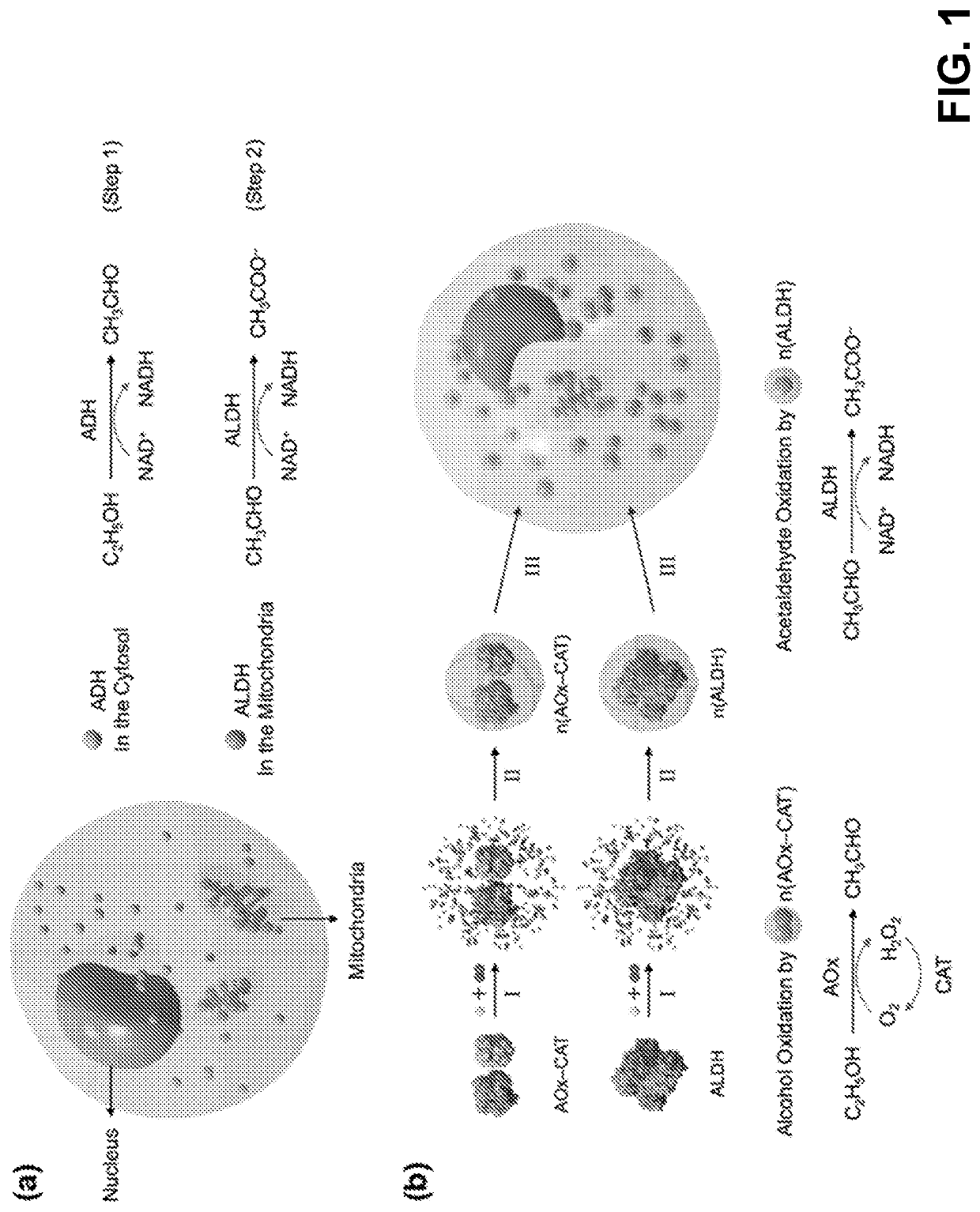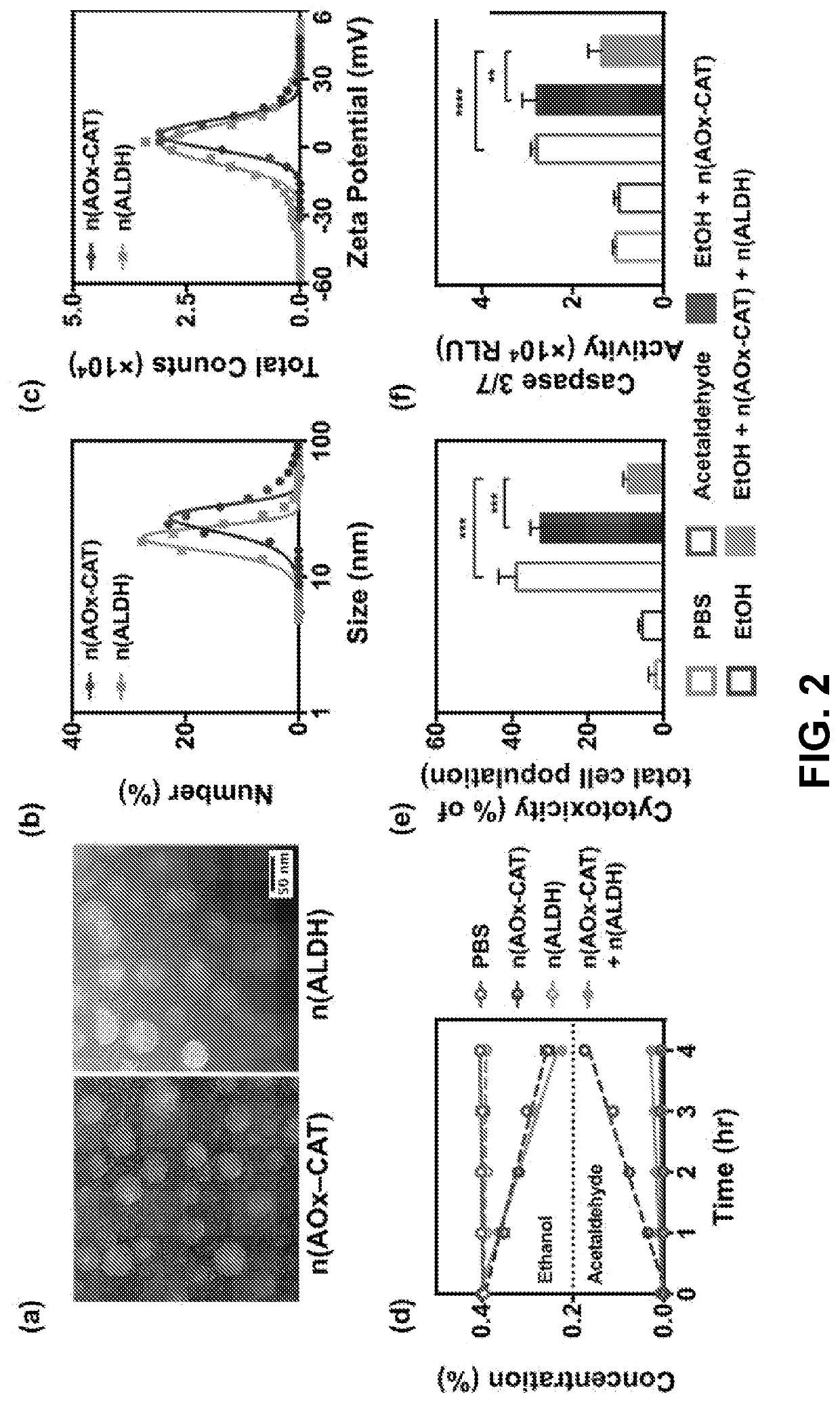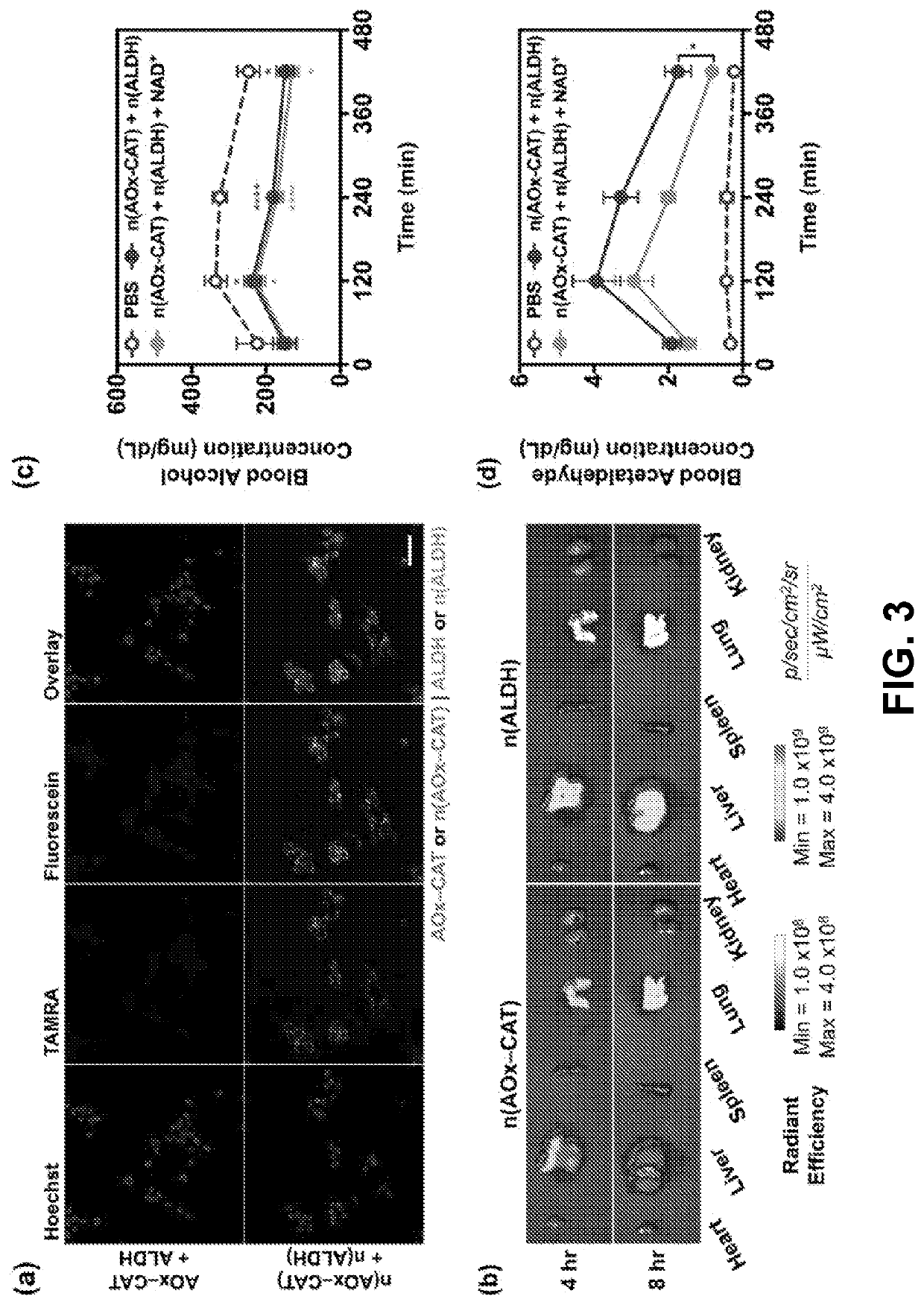A hepatocyte-mimicking antidote for alcohol intoxication
a technology of hepatocytes and nanocomplexes, applied in the direction of antinoxious agents, drug compositions, peptide/protein ingredients, etc., can solve the problems of no effective antidote for alcohol intoxication, alcohol consumption is the leading risk factor for premature mortality and disability, and serious diseases and health problems, etc., to achieve enhanced stability, fast transport of substrates, and high retention of activity
- Summary
- Abstract
- Description
- Claims
- Application Information
AI Technical Summary
Benefits of technology
Problems solved by technology
Method used
Image
Examples
example 1
of Enzyme Nanocapsules
[0056]All the enzyme nanocapsules were prepared one day before the animal experiments. Alcohol oxidase (AOx) and Catalase (CAT) dual-enzyme nanocapsules were prepared as previously described (see, e.g. Y. Liu et al., Nat. Nanotechnol. 2013, 8, 187). Synthesis of aldehyde dehydrogenase (ALDH) nanocapsule is demonstrated in FIG. 1b. In detail, ALDH (˜10 mg / mL, purchased from MP Biomedicals) was dissolved in Tris buffer (50 mM, pH 8.0, 50 mM KCl) and passed through Zeba desalting column (Thermo-Fisher Scientific) to remove the residual inorganic salts. Zinc acetate solution (final concentration 2 mM) was then added to block the active site of ALDH for 2 hr. Subsequently, the acryloyl groups were conjugated on ALDH with N-(3-aminopropyl) methacrylamide (APm)-modified succinimidyl 4-N-maleimidomethyl) cyclohexane-1-carboxylate (SMCC), with a molar ratio of 15:1 (APm-SMCC: ALDH). After the conjugation reaction at 4° C. for 2 hr, EDTA (10 mM) was used to extract the z...
example 2
tivity Assays
[0057]The native AOx-CAT and n(AOx-CAT) were dissolved in a solution containing HEPES (50 mM, pH 7.0) and alcohol (0.1%, w / v). The reaction for alcohol oxidation was carried out at room temperature for 5 min and the generation of acetaldehyde was measured based on its reaction with 3-methyl-2-benzothiazolinone hydrazine (MBTH). In brief, one volume of the acetaldehyde standard (Sigma Aldrich, ACS grade) or the sample was mixed with one volume of 0.8% (w / v) MBTH. Meanwhile, another one volume of 0.8% (w / v) MBTH was mixed with 1% (w / v) iron(III) chloride. The two solutions were incubated at room temperature for 15 min and equally mixed. The blue color that MBTH-acetaldehyde complex formed immediately after mixing was measured with a spectrophotometer at 600 nm. A standard curve with different acetaldehyde concentrations (250, 125, 62.5, 32.2, 15.6, 7.8 ppm) was prepared as a reference. The change in A600 was proportional to the activity of AOx-CAT.
[0058]The native ALDH an...
example 3
Assays
[0059]Thermal stability was conducted by incubating the native enzymes (AOx-CAT or ALDH) and nanocapsules (n(AOx-CAT) or n(ALDH)) (0.1 mg / mL) at 37° C. for 2 hr. Samples were taken at different time, and the residual activity was determined with activity assays. Proteolytic stability included trypsin (0.2 mg / mL) in each mixture during incubation, and the rest of the measurements were the same as in the thermal stability measurements. Long-term stability was performed by monitoring the size of n(AOx-CAT) and n(ALDH) for 2 weeks. Nanocapsules were maintained in PBS (pH 7.4) at 4° C. during the 2-week period.
PUM
| Property | Measurement | Unit |
|---|---|---|
| Concentration | aaaaa | aaaaa |
| Concentration | aaaaa | aaaaa |
| Concentration | aaaaa | aaaaa |
Abstract
Description
Claims
Application Information
 Login to View More
Login to View More - R&D
- Intellectual Property
- Life Sciences
- Materials
- Tech Scout
- Unparalleled Data Quality
- Higher Quality Content
- 60% Fewer Hallucinations
Browse by: Latest US Patents, China's latest patents, Technical Efficacy Thesaurus, Application Domain, Technology Topic, Popular Technical Reports.
© 2025 PatSnap. All rights reserved.Legal|Privacy policy|Modern Slavery Act Transparency Statement|Sitemap|About US| Contact US: help@patsnap.com



